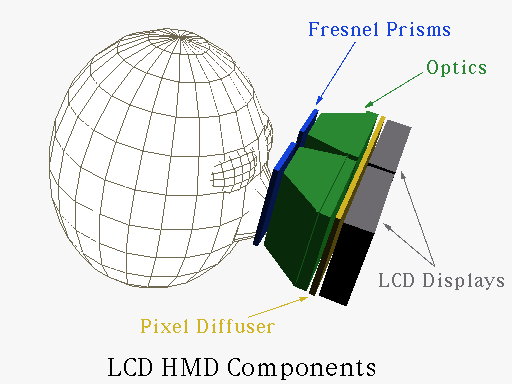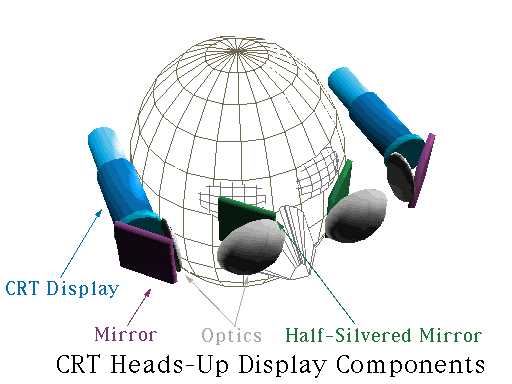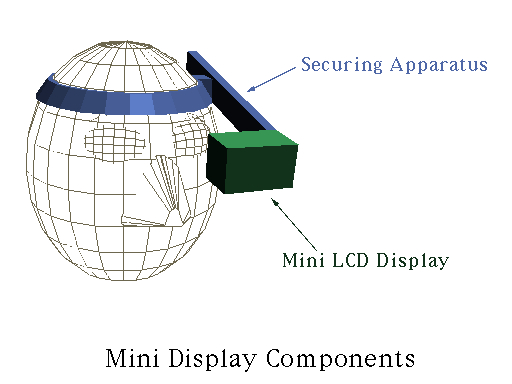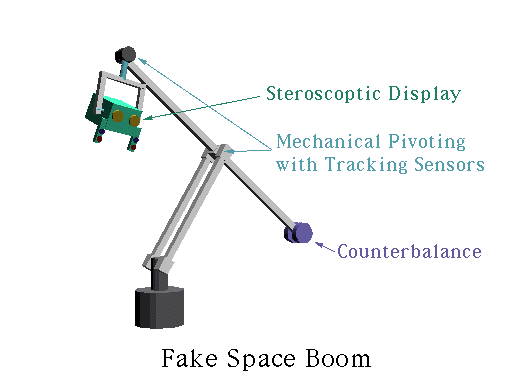The visual sense is used more than any other to process information. Even a quick glance at an intricate picture will be enough to process most of the details of the scene. Visual input is a necessary requirement for an engaging virtual environment. Many technologies use extensive software packages to enhance the two dimensional window of high resolution monitors. However, even these rendering packages can only engage the senses so far. The next step is to change the hardware to produce greater visual experiences.
The achievement of stereoscopic vision gives a three dimensional view of a virtual world. Most of the areas discussed further deal with the creation of stereoscopic vision. Stereoscopic vision occurs when two separate images are generated and viewed. The left eye views the left image and the right eye views the right image. The two images differ slightly due to visual parallax, which is due to the distance between the eyes. Monoscopic vision can also be produced with these systems. This can be done easier, but with this advanced hardware the stereoscopic applications would be more prevalent.
Reconfiguring the monitor output will allow right and left images to be shown alternately. Therefore on a standard monitor, 30 frames of the left eye image alternate with 30 right eye images. The viewer then wears a special pair of glasses. The LCD lenses in the glasses will flicker at the same time as the screen. When the left eye image is displayed, on the monitor, the right LCD lens darkens which blocks vision in the right eye. Alternately the same is true; the left eye can not see the right eye image. This successfully distributes each view to each eye and produces the stereoscopic vision. However on a standard screen only 30 fps would be shown which will produce flickering. This problem can be solved using the new 120 fps monitors that would yield a 60 fps per eye.

Liquid Crystal Displays are a compact and lightweight monitor system perfect for placing in a HMD. Portable game systems, like Nintendo GameBoy or Sega Game Gear use LCD screens. It is a relatively inexpensive way to provide color to the virtual environment. A field of view from 40-50 degrees provides fair resolution. However, since 140 degree field of view provides a broader sense of immersion by giving peripheral views, special optics are used to widen the standard LCD screens to the 140 degree field of view. That major drawback of LCD is the low resolution. Around 29,000 pixels are provided compared to a standard 14 inch Macintosh with 307,200 pixels. A high-resolution 20" monitor can have over one million pixels. When optically widened the LCD view become worse. A trade off occurs between high resolution and wide field of view.
Work is being performed on a virtual retinal display, a small display which will project an image directly on the retina. This display would be extremely small and would have adequate resolution.

These HMDs mostly use CRTs, occasionally LCDs, to generate the image at the side of the viewers head. This image is than reflected using mirrors around into the viewer's eyes. A half-silvered mirror can be used which not only reflects the generated image but also allows for the viewer to see the outside "real" world. This heads-up display (HUD) can then overlay the "real" world with additional information, thus augmenting the "real" world. Virtual reality can be used to enhance actual reality. CRTs are favored due to their brightness.

Downscale versions of the above systems can be used to augment reality. A single, small LED display placed close to an eye, or a CRT image projected on a mirror inside a pair of glasses will create a floating display to the viewer. This display can show specific information important to viewers. Viewers can see and interact with the real world. However, whenever the viewers need to, they can look at the mini display for the information.

Fake Space Labs have developed a full 6 DOF tracking stereoscopic display that is not mounted on an individual's head. Using mechanical tracking computations of the viewer's position occur faster. Larger displays can be used because their weight and size are not noticed due to the counterbalance of the boom. Therefore higher resolution is allowed. viewers can just walk up to the boom and place their face into the optics and move around, like a pair of binoculars attached to skyscraper. Buttons are provided for interaction with the virtual world. The boom is easy to go from real to virtual and back again because there is no head gear to put on or take off.